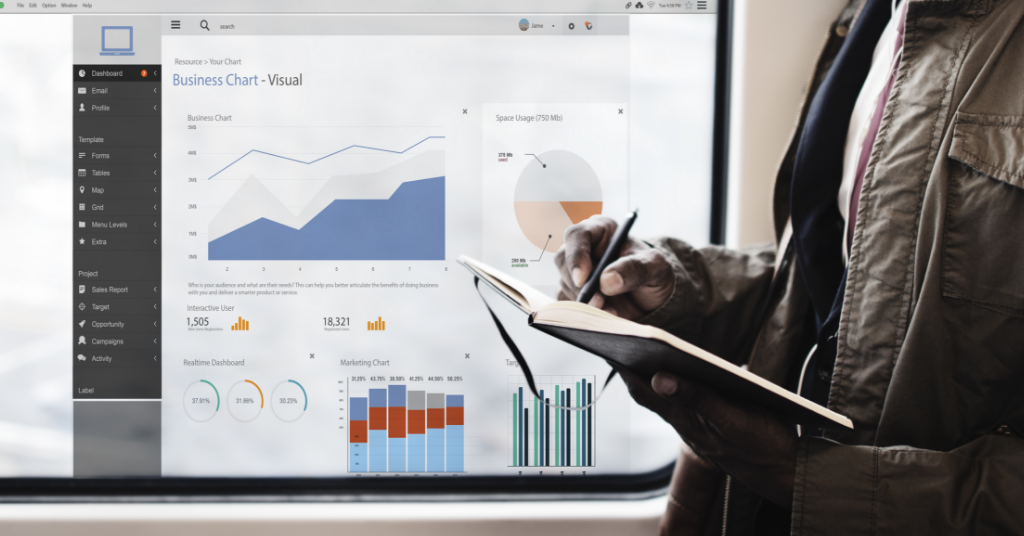As we navigate through a tough economy, it’s becoming more and more important for businesses to rely on data-driven insights. A report by McKinsey & Company shows that in previous recessions, companies that used data to inform their decisions were more likely to emerge stronger than their competitors. In fact, during the 2008 financial crisis, companies that made data-driven decisions experienced a 5-6% increase in productivity, while companies that didn’t use data saw a decrease of 2-3%.
With so much uncertainty in the market, it’s easy for businesses to feel overwhelmed and lost. But by using data to drive decision-making, companies can better understand their customers, identify trends, and make informed choices that can help them weather the storm.
Power BI is a powerful business intelligence tool that enables users to visualize and analyze data in real time. Power BI can help businesses turn complex data into actionable insights.
Let’s take a deep dive into how to create effective dashboards in Power BI that can help you make sense of the data and drive business success even in tough times.
Table of Contents
A guide to creating effective Power BI dashboards
Step 1: Connect your data
The first step in creating a dashboard in Power BI is to connect your data sources. Power BI can connect to a wide range of data sources, including Excel files, databases, and cloud services such as Azure and SharePoint. Once you’ve connected your data sources, you can start creating reports and visualizations.
Step 2: Create a report
Before you can create a dashboard, you need to create a report. A report is a collection of visualizations that help you analyze and interpret data. In Power BI, you can create reports using a drag-and-drop interface, which allows you to add charts, tables, and other visualizations to your report. You can also add filters and slicers to your report to make it interactive.
Step 3: Pin visualizations to a dashboard
Once you’ve created a report, you can pin visualizations to a dashboard. A dashboard is a collection of visualizations that give you an overview of your business data. You can create multiple dashboards for different purposes, such as sales, marketing, and finance.
To pin a visualization to a dashboard, simply click the Pin Visual button on the visualization toolbar. You can choose the dashboard you want to pin the visualization to and then resize and rearrange the visualization as needed.
Step 4: Customize your dashboard
Once you’ve pinned visualizations to your dashboard, you can customize it to meet your needs. You can add images, text boxes, and other elements to your dashboard to provide context and additional information. You can also use the formatting tools in Power BI to change the colors and fonts of your dashboard.
Step 5: Share your dashboard
Finally, you can share your dashboard with others. Power BI allows you to share your dashboards with colleagues, clients, and stakeholders by embedding them in a website or sharing a direct link. You can also control who has access to your dashboard by setting up security and access controls.
Best practices for creating Power BI dashboards
To create effective dashboards in Power BI, it’s important to follow best practices. Here are some tips to keep in mind.
1. Keep it simple: Avoid cluttering your dashboard with too many visualizations. Focus on the most important data and use visualizations that are easy to read and understand.
2. Choose the right visualizations: Use the right visualizations for the type of data you’re analyzing. Bar charts and pie charts are excellent for comparing data, while line charts are better for showing trends over time.
3. Use colors effectively: Use colors to highlight important information and make your dashboard visually appealing. However, avoid using too many colors or using colors that are too bright or distracting.
4. Test and iterate: Test your dashboard with users and iterate based on their feedback. This will help you create a dashboard that meets their needs and provides value.
It’s important to remember that the key to successful data visualization is to focus on the most important metrics and tailor the dashboard to the intended audience. With the right approach and attention to detail, you can unlock the full potential of your data and gain a competitive edge in today’s fast-paced business environment. So, don’t hesitate to start exploring Power BI’s features and experiment with different visualizations to find the best fit for your business needs.













